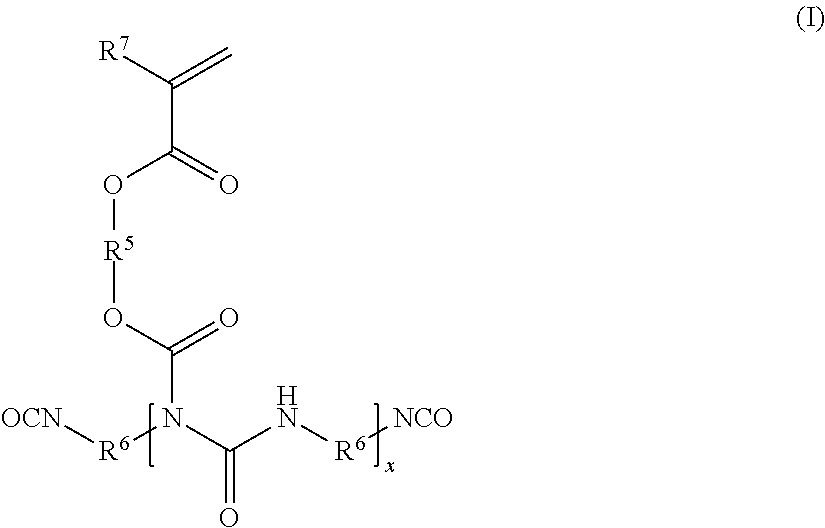Method for printing on non-woven textile substrates using radiation-curing inks
a technology of radiation-curing inks and textile substrates, which is applied in the direction of dyeing process, textiles and paper, printing, etc., can solve the problems of skin irritation and/or odor nuisan
- Summary
- Abstract
- Description
- Claims
- Application Information
AI Technical Summary
Benefits of technology
Problems solved by technology
Method used
Image
Examples
examples
[0354]The present invention will now be explained in greater detail using working examples, but the present invention is in no way limited to these working examples. Moreover, the terms “parts”, “%” and “ratio” in the examples denote “parts by mass”, “mass %” and “mass ratio” respectively unless otherwise indicated.
Methods of Determination
1. Solids Content (Solids, Nonvolatile Fraction)
[0355]Unless otherwise indicated, the solids content, also referred to as solid fraction hereinafter, was determined in accordance with DIN EN ISO 3251:2018-07 at 120° C. and 60 min, initial mass 1.0 g.
2. Viscosity
[0356]The viscosity is determined with a rotational viscosimeter (rheometer MCR302, measuring geometry DG42) at 23° C. using a shear rate of 1000 s−1.
[0357]The surface tension was measured by using a Krüss tensiometer K100 with ptlr ring according to DIN EN 14210:2004-03 (ring method) at 23° C.
Inventive Examples
[0358]The inventive examples below serve to elucidate the inven...
PUM
| Property | Measurement | Unit |
|---|---|---|
| particle size | aaaaa | aaaaa |
| glass transition temperature Tg | aaaaa | aaaaa |
| glass transition temperature Tg | aaaaa | aaaaa |
Abstract
Description
Claims
Application Information
 Login to View More
Login to View More - R&D
- Intellectual Property
- Life Sciences
- Materials
- Tech Scout
- Unparalleled Data Quality
- Higher Quality Content
- 60% Fewer Hallucinations
Browse by: Latest US Patents, China's latest patents, Technical Efficacy Thesaurus, Application Domain, Technology Topic, Popular Technical Reports.
© 2025 PatSnap. All rights reserved.Legal|Privacy policy|Modern Slavery Act Transparency Statement|Sitemap|About US| Contact US: help@patsnap.com



